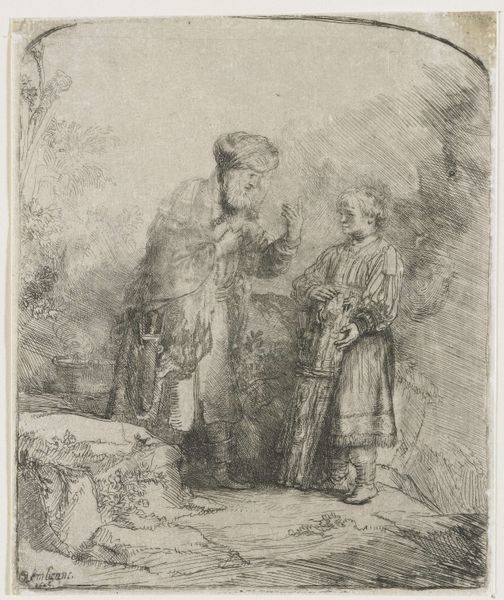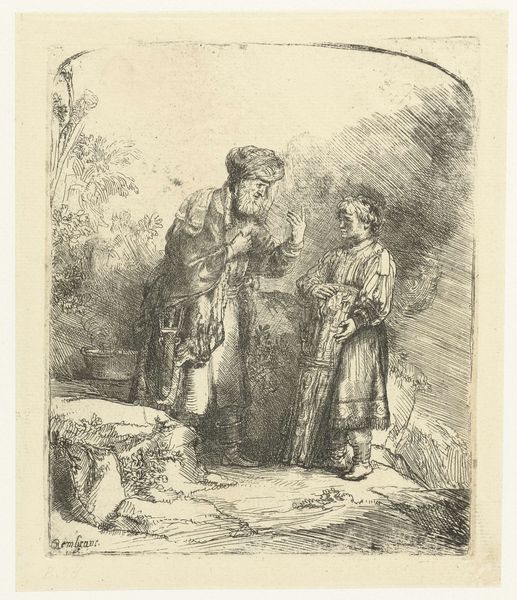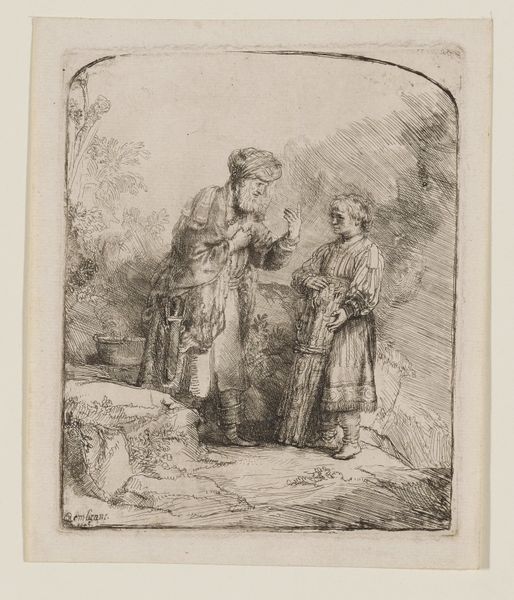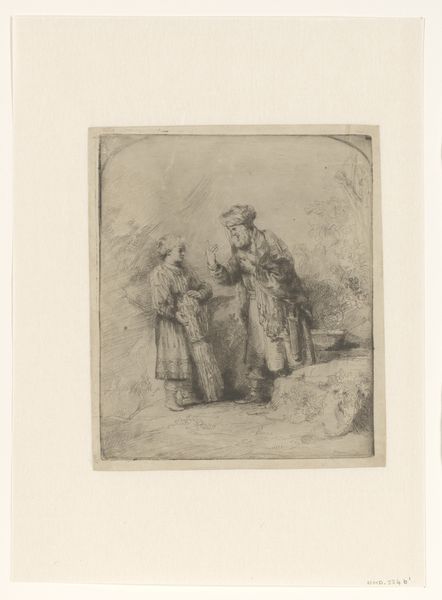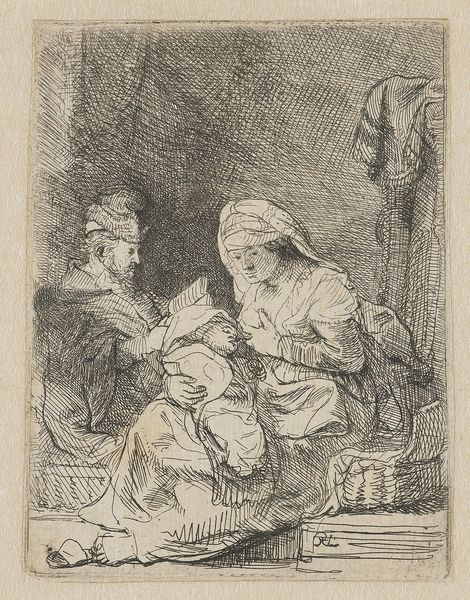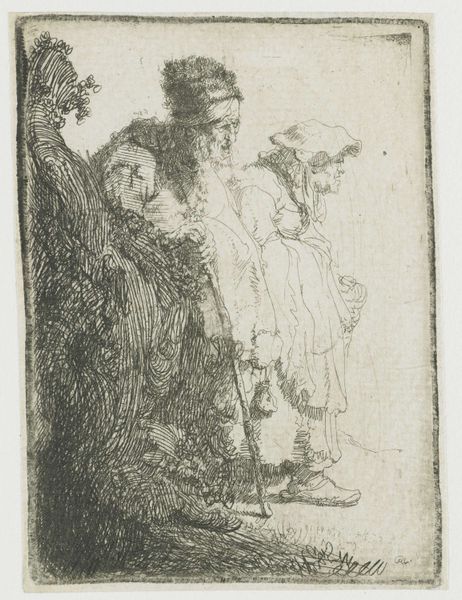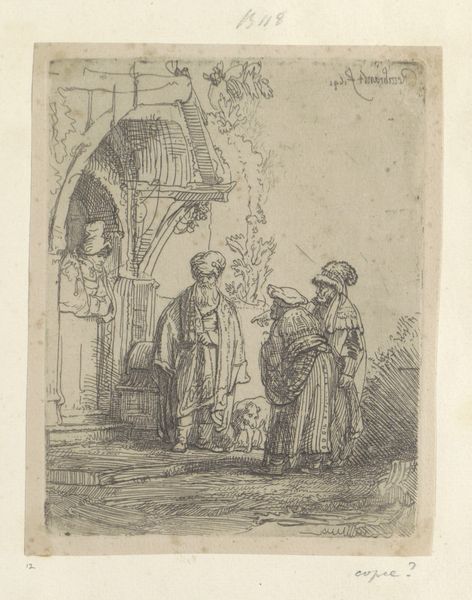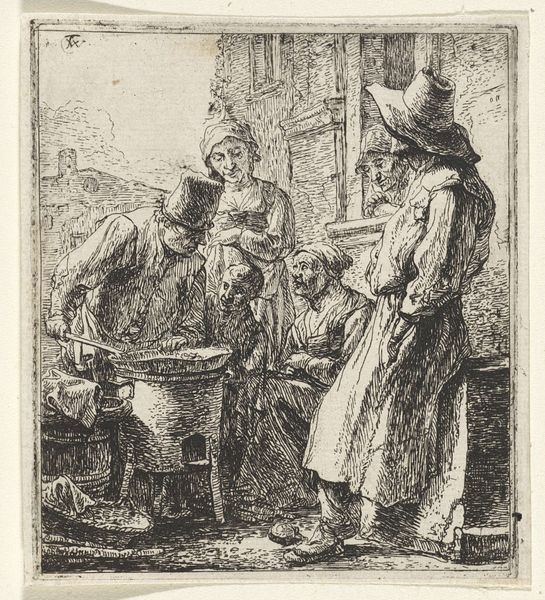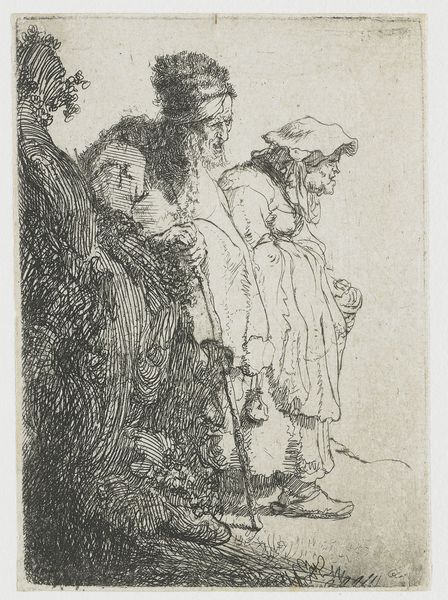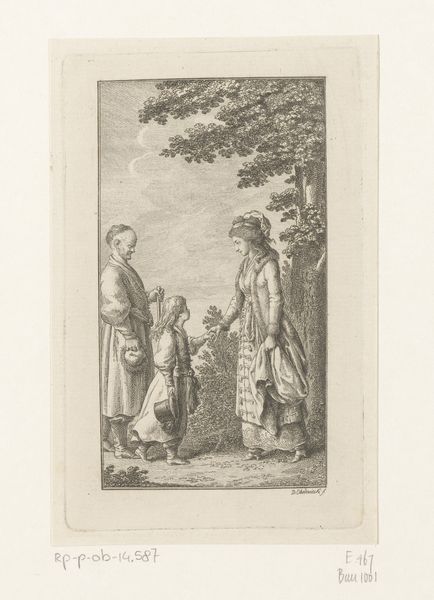
drawing, print, etching
#
drawing
#
baroque
# print
#
etching
#
figuration
#
men
#
line
#
history-painting
Dimensions: Sheet (Trimmed): 6 1/4 in. × 5 in. (15.9 × 12.7 cm)
Copyright: Public Domain
Editor: We're looking at *Abraham and Isaac (reverse copy)*, a print made with etching by Rembrandt van Rijn. It seems to be from sometime between 1620 and 1900. The first impression I get is how intensely emotional it seems. It is as if a story that has built in momentum is reaching its pivotal apex. The suspense, created mostly by a delicate rendering with lines, feels as palpable as a physical ache. What resonates most with you when you look at this, considering its source material? Curator: You know, what gets me, isn’t the divine command, as much as Abraham’s utter stillness, almost a sleepwalking obedience. The hand raised to the sky isn’t defiant, it’s… resigned. The etching reminds us, with every meticulous line, that faith and doubt can coexist. Editor: That stillness you mention, the “sleepwalking obedience”, is what I find terrifying about the artwork, almost akin to blind obedience. Is that stillness meant to be admired? Curator: Ah, see, now you’re touching on the deliciously thorny questions this image throws our way. Admired? Maybe… or perhaps Rembrandt’s showing us the unsettling extremes of faith, its power to both inspire and, dare I say, to blind. Look at Isaac's youth, vulnerable and unknowing. Do you see what I see? This isn’t just a biblical tale; it’s a mirror reflecting our own struggles with belief, authority, and the sacrifices we make – or are willing to make. Do we judge Abraham or sympathize? Editor: Wow, that’s… incredibly unsettling. It really wasn’t a story of triumph, it’s one of quiet internal struggle. Thank you, I'll never see Abraham the same way. Curator: The pleasure is all mine. Keep those questions coming; that’s where the real art happens – in our own interpretations.
Comments
No comments
Be the first to comment and join the conversation on the ultimate creative platform.
